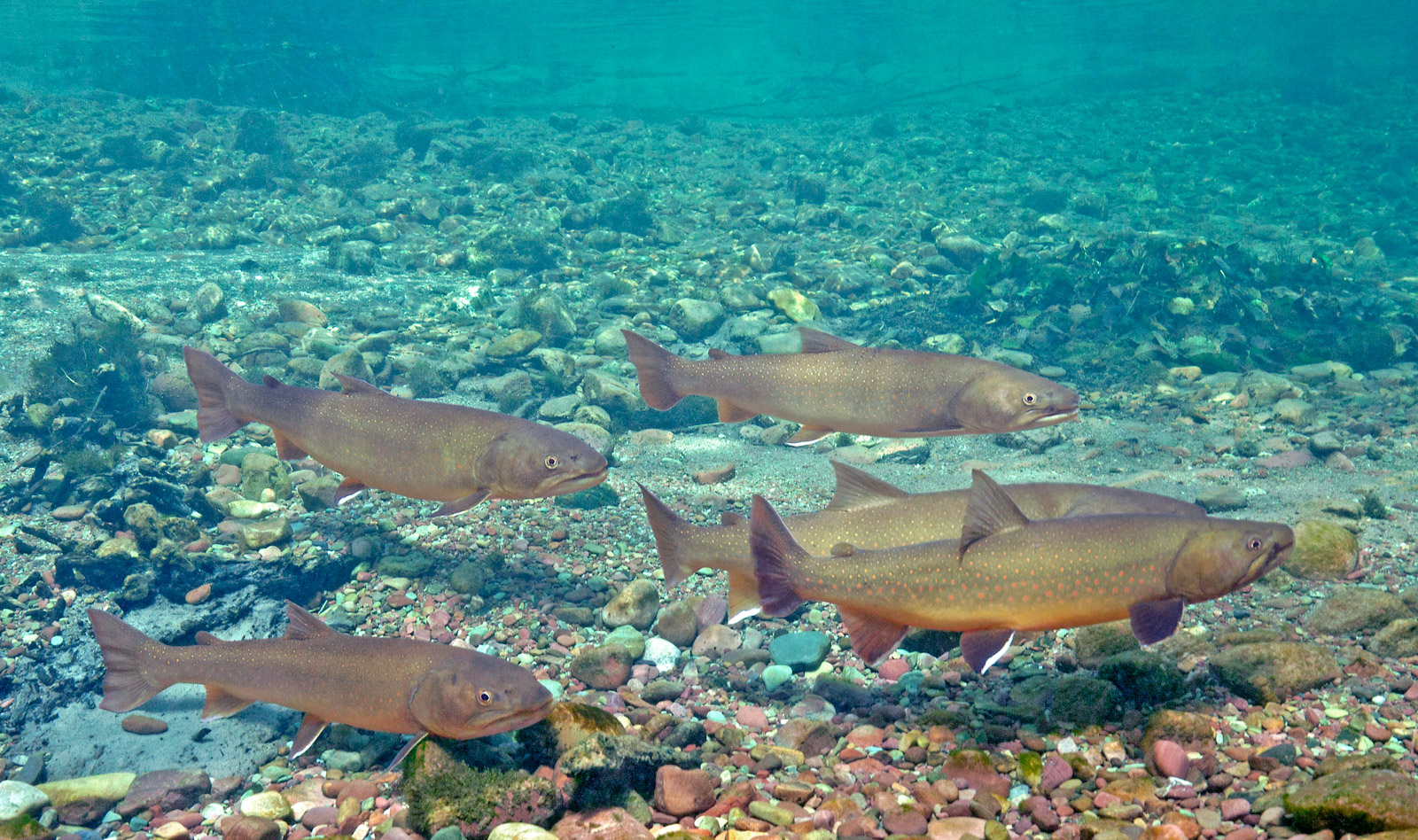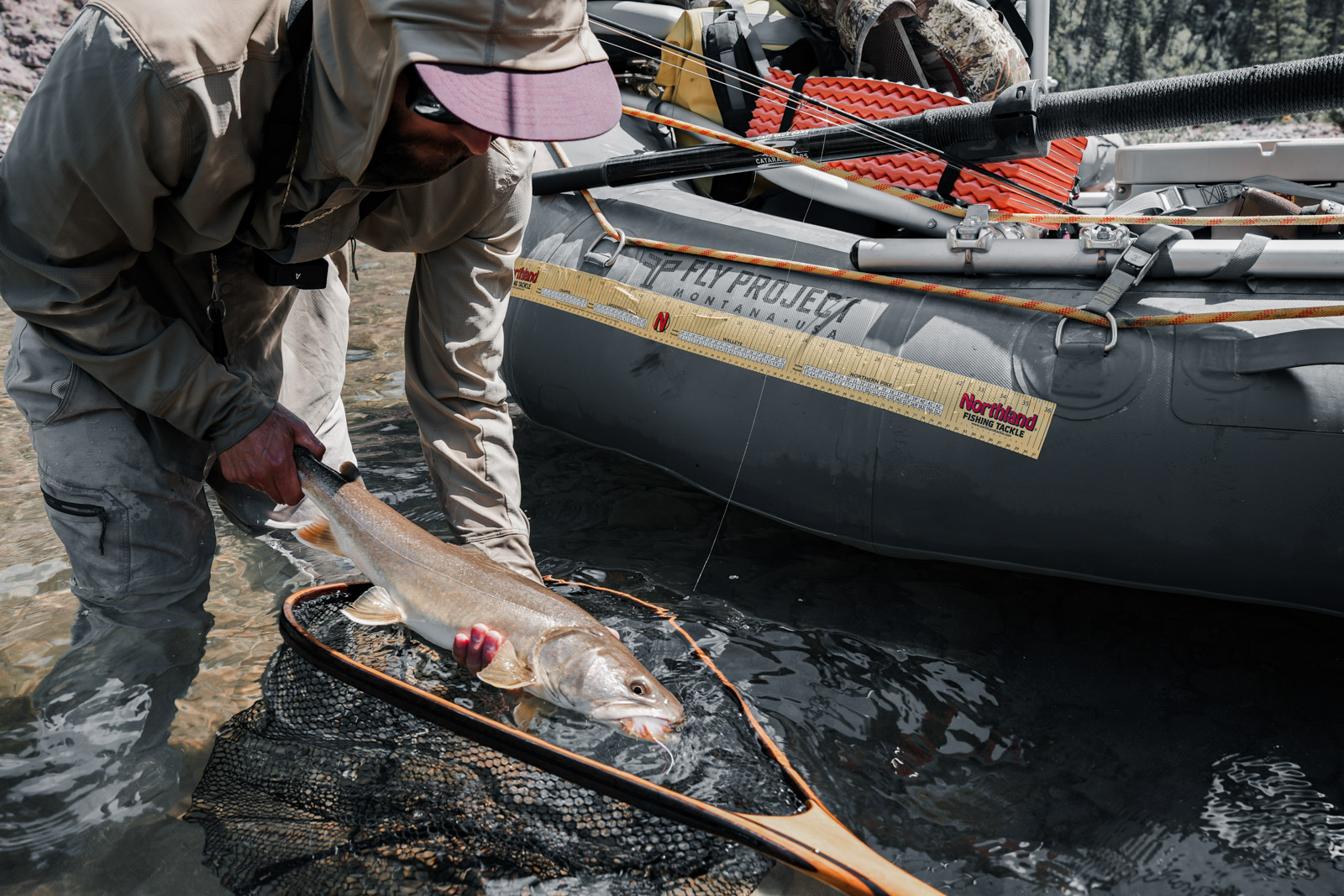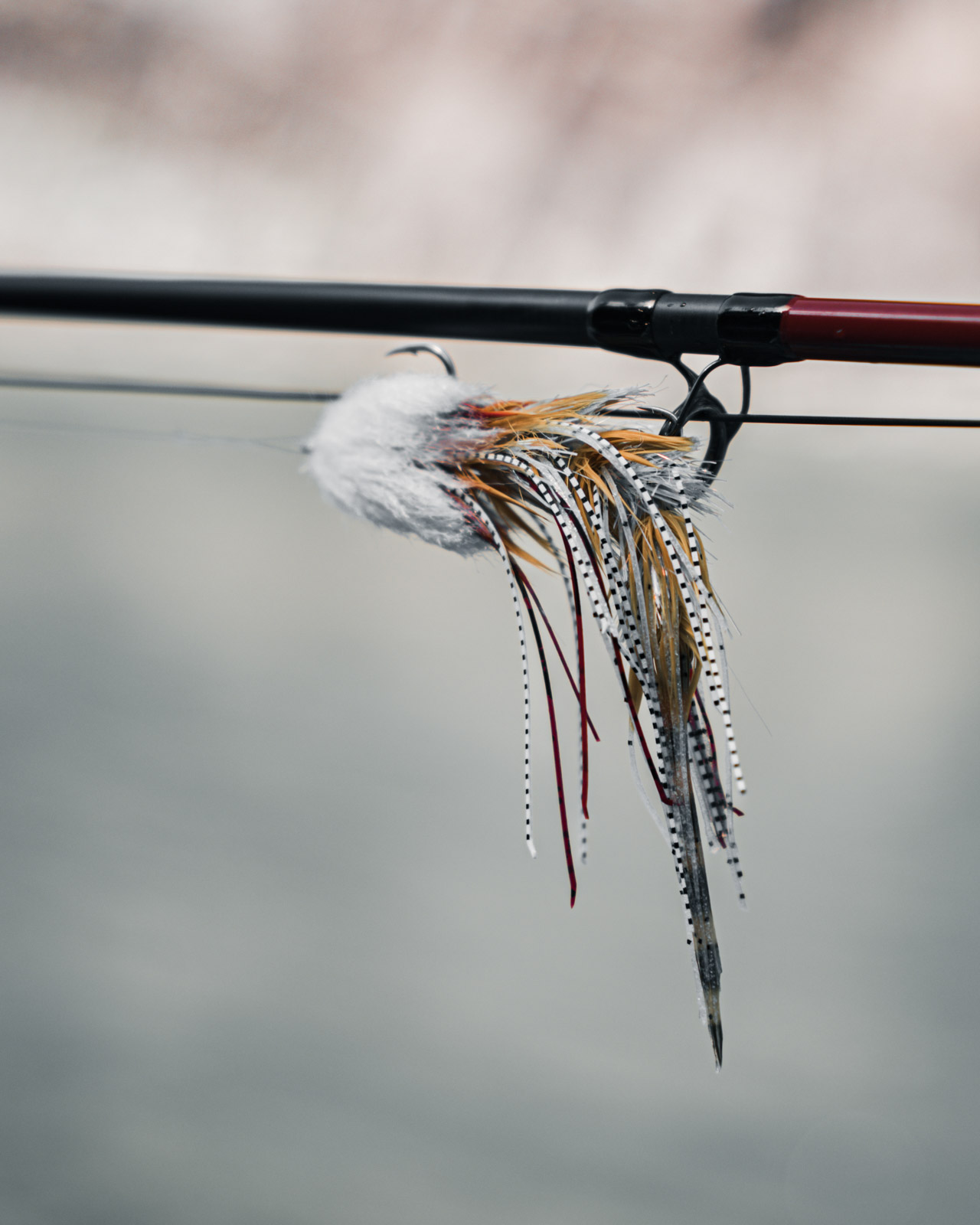Myth & Monsters

In search of Montana’s biggest, baddest trout.
By Pat Straub
If the residents of Mount Olympus were anglers, bull trout would be a favorite quarry. So too with the Greek heroes—imagine Odysseus and his crew kicking dirt and drinking beer after pounding in the last nail on the Trojan horse. Their thirst for victory would demand a fish as aggressive and storied as a bull trout.
Salvelinus confluentus, a.k.a. bull trout,is one of only four native trout species in Montana. Two others—rainbow and lake trout—are abundant, and cutthroat trout are found in plenty of waters.
Bull trout are desired by anglers across state—and the globe—because they are rare, aggressive, and grow big—we’re talking 40-inches and 15-pounds big. Catching a bull trout on a fly is like snagging one of Zeus’s bolts in a bottle. And the only ones in Montana that are best pursued with the long rod are found in remote, rugged, inaccessible waters… just like those of Odysseus’s fabled voyage home from Troy.

To get to these waters, anglers must venture long distances over dirt roads, slog miles in hiking boots or on horseback, even portage rafts up and down hillsides. The romance of landing a bull trout comes with the rush of enduring a little pain in the process. But like the hero’s journey, this epic quest is well worth the effort.
Once at these mythical hinterlands, those first hopeful casts are made into ultramarine deep pools of a Bob Marshall Wilderness river. The virgin water running past your legs washes off the blood you spilled getting there. Morning light sneaks down from the canyon walls and penetrates the river. It lights up the shades of greens, browns, and reds on the river rocks. If feels as if you’ve been transported to another world, another time.
As you get to work, the frigid water sends memories through your casting arm and into your brain of previous trout pried from beautiful waters. But these waters are special, for within their pellucid pools lurk something unlike any other native trout you’ve caught: monster bull trout.
Surrounded by steep and shaded canyons, dozens of free-flowing tributary streams, the South Fork of the Flathead River feeds Hungry Horse Reservoir, providing one of the last vestiges of legitimate bull-trout habitat in Montana. This is the only stronghold of the state’s sustainable and targetable populations of bull trout. (Note: only on the main-stem South Fork can you deliberately fish for bull trout; the tributaries must be left alone—sacred and unspoiled, like temples of the gods.)
There used to me a lot more places where bull trout swam. In the mid-20th century, they were prevalent in the Clark Fork watershed and the other Flathead forks. Due to their eagerness to attack large lures and bait, bull trout were targeted and harvested en masse. Bull trout also were thought to prey heavily on small trout, reducing the public’s tolerance of them in put-and-take fisheries. However, we now know that bull trout and other trout species co-exist nicely when habitat is intact and cold water flows.

As human-powered progress increased—if you choose to call dams, deforestation, mining, subdivisions, antiquated water-rights laws, and climate change progress—from the 1960s through 1980s, bull-trout populations in Montana plummeted. Today, they’re listed as a threatened species under the Endangered Species Act.
But like a good god, these fish provide a glimmer of hope, inspiring anglers to be part of the solution. In the South Fork of the Flathead and Hungry Horse, Montana Fish, Wildlife & Parks (FWP) tries to work with anglers to better understand and document bull trout and their habits. For anyone fishing here or in Lake Koocanusa, where bull trout are legal to pursue and harvest, a catch-card is required. Data collected from these cards is extremely helpful to fisheries managers.
“Bull trout need clear, cold water and complex, connected habitat,” says Eric Roberts, FWP’s fisheries management bureau chief. “We’ve done a lot of work to provide for these things in bull trout streams and we need to look at doing more.”
Because bull trout are sensitive to environmental factors, few waters in Montana harbor viable populations; and even in those waterbodies, numbers have declined in recent years. Therefore, the state of Montana has further restricted bull-trout harvest. Now, any bull trout caught in Lake Koocanusa, or anywhere besides Hungry Horse Reservoir, must be immediately released. FWP has made the law very clear on this.
So what’s an angler to do when he or she wants to catch a bull trout on the fly in Montana? First, learn the rules—they’re very strict and the consequences of violating them are severe. Visit the FWP website for comprehensive regulations.
Second, do some homework and learn the migratory habits of bull trout in the legal waters. Yep, these large fish migrate upstream and downstream to spawn. Most upstream migration patterns occur in late summer but can start as early as June. Downstream migration can begin in late August but often occurs in September and as late as October. However, streamflows are often low in those months… so consider weather events that might induce a migration. Perhaps a large rainstorm? Hint, hint.
Third, imbibe some humility and put in a good old-fashioned effort to earn a bull-trout catch. Make a long hike. Do some pre-scouting and map-sleuthing. Take an overnight slog of a backcountry raft trip on a remote river. Learn to cast a heavy-ass fly on a sink-tip. Refine your double-haul. Learn to tie a Circus Peanut. Say a prayer to Poseidon, that he may guide you to the lair of a Kraken-sized bull-trout, deep beneath the water’s surface, in a remote wilderness locale.
Bottom line: bull trout have been native to Montana’s watersheds for a heckuvalot longer than we have, and while our population is growing, theirs has shrunk to a fraction of its original size. These fish deserve our respect. If you happen to catch one by mistake, release it quickly and properly. And if you’re looking for adventure and want to pursue these monsters of Montana’s waters, while you still can—well then, get a catch-card, get your gear together, and get ready to dive headfirst into the shadowy underwater world of big, aggressive bull trout.

